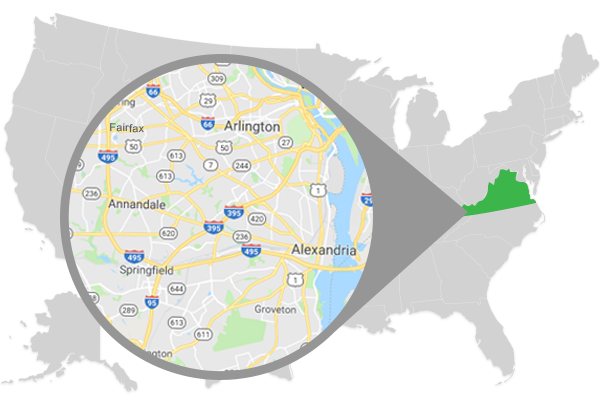How do we get raccoons out of the attic?
So, you’ve got guests. They are uninvited, unwelcome, and totally unpleasant. They are raccoons… and, unfortunately, they will not leave by themselves. You’ve got a problem. You need raccoon control.
Your evenings are disrupted by heavy thumping on the ceiling while growling and scratching noises wakes you up at night. The trash can is often tipped over, and your garden is spoiled by raids of your unwelcome guests. These are common annoyances when raccoons are around your property. But they have more surprises in store for you.
Having large critters roaming your house is no doubt a creepy feeling, but what goes on behind the scenes is even more disturbing. Your attic, pipes, ductwork, and insulation are relentlessly destroyed every passing day.
As cute as they may look, raccoons cause severe damage to your property and pose a threat to the health of you and your pets.
Once you get raccoons in your house, you have just one priority: You need to get those raccoons out of your attic immediately! There is no time to waste unless you want to see big money flying out of your pocket.
The good news is that you can get raccoons out of your attic, prevent them from coming back and find your peace of mind again.
The bad news, on the other hand, is that this is not an easy job. It requires time and expertise and is hardly ever a DIY task. Most likely, you will need professional help to take care of the matter, restore and repair your house and prevent them from coming back again.
Once you are done reading this post, you will know all the steps needed to get raccoons out of your attic and repair all the damage. Most importantly, you will learn how we can help you handle the insurance claim and have your expenses refunded.
Removing raccoons from your attic is not a quick and easy fix. It requires knowledge, experience, physical strength and personal safety consciousness. The market is full of products, strategies and DIY guides to get raccoons out of your attic, but at best they may only partially solve your problem. For a definitive solution to your nuisance, chances are you need a wildlife specialist.
Step 1: Look for all the raccoons in your attic
The main reason a raccoon may have made your attic his new den is because the female is about to give birth. Raccoons need a safe, warm and dry place to raise the new pups, and your attic makes a perfect habitat. This commonly happens from February to May, when you are more likely to experience raccoon activity.
This is an important fact that leads to further considerations. If you only remove the mother, the pups will be left behind, and they will starve to death. This is no doubt a cruel way to get rid of raccoons. Plus, the dead bodies left in your attic will produce such an unbelievably foul smell in your house that you will wish the raccoons were still alive.
Your primary concern, therefore, is to discover if there are pups in the attic. Finding the litter is a daunting job. The mother usually stashes them in the eaves, down a wall or in other inaccessible places. To locate them requires patience, endurance and a measure of physical strength. You have to get into the attic, make your way through raccoon droppings and crawl around to inspect every hidden spot.
You’re not exactly looking forward to that, right? It may take hours. Even so, your hunt may be unsuccessful. In this case, remain still until the little pups finally start to chatter and lead you to the litter. How long it will take just depends on how lucky you are.
Right now you are totally focused on locating the litter but don’t forget your personal safety. You don’t want to add a personal injury to the raccoons’ nuisances.
Step only on the wooden beams to avoid falling through the ceiling, and wear protective clothing. Be careful of a potential attack from an angry raccoon mother or, even better, wait for when she’s not around. Most importantly, as you will discover in Step 3, always wear a professional respirator to prevent serious health issues.
Once you’ve located the litter, you are now ready to move on to the next step.
Step 2: Raccoon removal from your attic
There are several techniques for going about this step, but we want to consider the only one that is safe and humane for the raccoons, which is trapping.
Your first target is the litter. Wearing thick leather gloves, remove all the pups and gently put them in a pillowcase. Don’t be deceived by their innocent looks: Young raccoons can claw and bite. However, If correctly handled, the pups will not suffer, and you won’t be harmed.
It is now time to set the trap. You can easily get a trap at a hardware store, but making it work successfully is a different story. It requires much expertise.
First of all, you want to trap the raccoon living in your attic and not any other animals in the neighborhood. If you don’t know what to do, you have a better chance of trapping your neighbor’s cat than the raccoon.
The best way to target your raccoon is to use the young pups as live bait. A mother raccoon is very protective in caring for her pups, and that will play to your advantage. Put them in the back of the cage and the mother will come to rescue the young raccoons at any cost.
If you do a good job, or most likely a wildlife professional does it for you, you can now move ahead to the next step. Check local laws to see if you are legally permitted to do your own trapping.
Step 3: Clean up the attic
Once you get the raccoons out of your attic, you will feel quite relieved. The unwelcome guests are gone, and your home is quiet again.
Unfortunately, you are still only halfway to solving your problem.
Raccoons are messy, and they use your attic as a raccoon latrine. Their feces and urine may be piled up in one spot, but are usually spread everywhere — not a pleasant sight or smell at all! Besides being disgusting, raccoon droppings are highly dangerous for your health and your pet’s too, not to mention that they may cause flea and mite infestations.
Once the raccoon droppings are finally removed, your attic is almost ready to be fixed. At this point, before starting the repair and restoration work, you should consider the next step.
Step 4: Decontaminate the attic
Raccoon fecal matter can be quite easy to remove when the necessary precautions are taken. However, this is not so with urine.
Urine obviously cannot be collected by hand. Urine is absorbed by the insulation, so you will need to replace it. Urine even soaks into wood and drywall. Unlike the insulation, these cannot be easily replaced. Leftover urine or waste you could not reach are still disease carriers and will continue producing a bad smell. Yuck!
A wildlife specialist will use proper tools and sanitizing products to fog or spray your attic. This process will thoroughly sterilize the area and kill harmful pathogens along with the bad odor.
Now your attic is totally clean and safe to be in, it is time to move to the final step of the process. Which is repair!
Keywords:
Female raccoon, health risk, wildlife control, open holes, cage trap, professionals servicing, remove the babies, raccoon roundworm, raccoon problems, call a professional, animal control, raccoon infestation.




